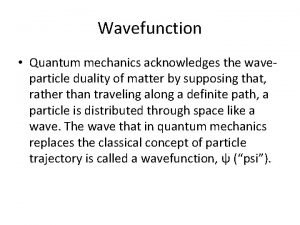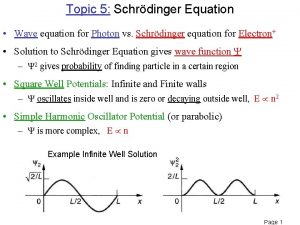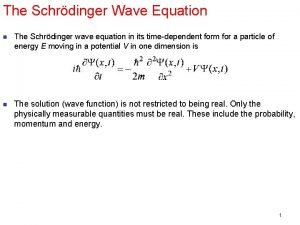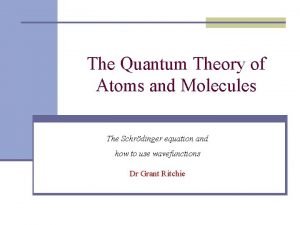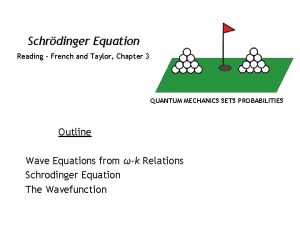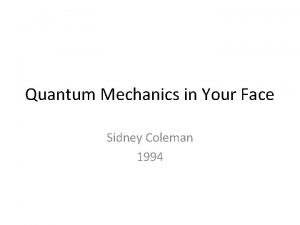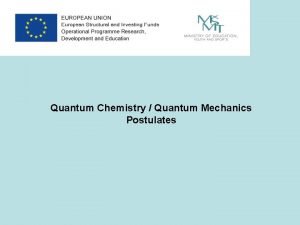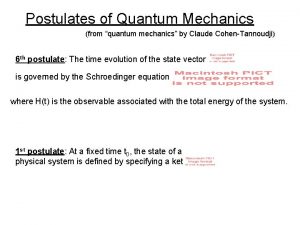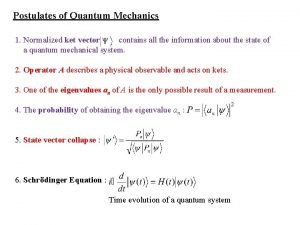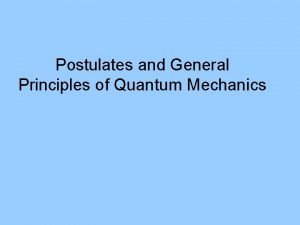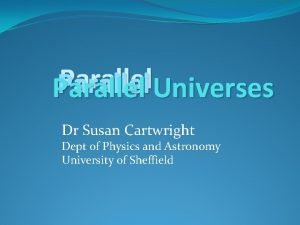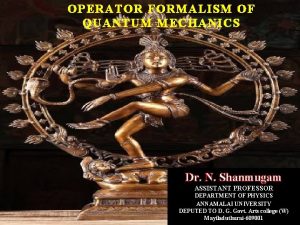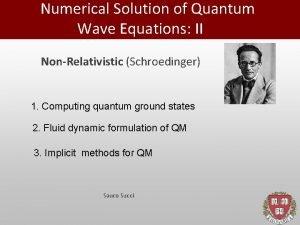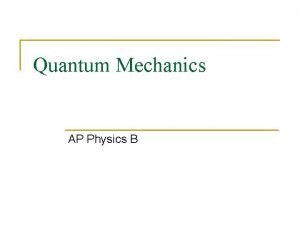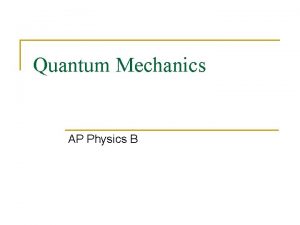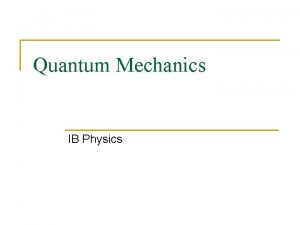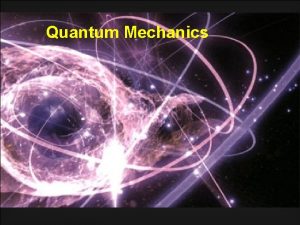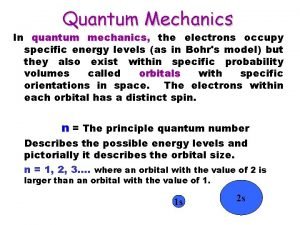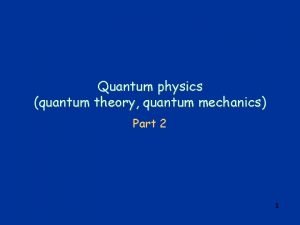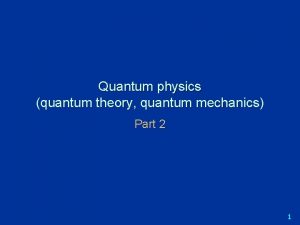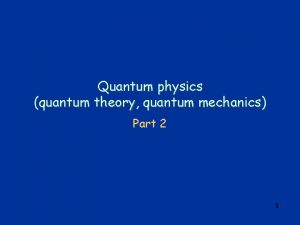Principles of Quantum Mechanics Physics 123 2192021 Lecture















- Slides: 15

Principles of Quantum Mechanics Physics 123 2/19/2021 Lecture XV 1

Concepts • • • De Broigle waves Heisenberg’s uncertainty principle Schrödinger’s equation Particle in a box Boundary conditions Unitarity condition 2/19/2021 Lecture XV 2

Wave – Particle duality • If light exhibits both wave and particle properties then particles (e. g. electrons) must also exhibit wave properties – e. g. interference. • Matter (de Broglie) waves l=h/p p=mv 2/19/2021 Lecture XV 3

Interference of electrons • • Send electron beam (a lot of electrons) on crystal structure Interference pattern is determined by l=h/p Double slits distance d~1 nm Interference pattern – Maxima (more e): – Minima (no e): 2/19/2021 d sinq = m l d sinq = (m+½ ) l Lecture XV m=0, 1, 2, 3, …. 4

Matter waves • Particle position in space cannot be predicted with infinite precision • Heisenberg uncertainty principle • (Wave function Y of matter wave)2 d. V=probability to find particle in volume d. V. • Laws of quantum mechanics predict Y for a given system • Given Y one can estimate probability for certain outcomes of experiment 2/19/2021 Lecture XV 5

Schrödinger’s equation • Equivalent of energy conservation equation in classical mechanics. • Predicts the shape of the wave function. • System is defined by potential energy, boundary conditions 2/19/2021 Lecture XV 6

Particle in a box • Infinite potential well • Particle mass m in a box length L • U(x)=0, if 0<x<L, • U(x)=∞, if x<0 –or- x>L • Boundary conditions on y: • Y(0)=0=Y(L) 2/19/2021 Lecture XV 7

Particle in a box • Second derivative proportional to the function with “-” sign • Possible solutions: sin(kx) and cos(kx) k-wave vector 2/19/2021 Lecture XV 8

Particle in a box • Let’s satisfy boundary conditions Wave vector is quantized! 2/19/2021 Lecture XV 9

Particle in a box • Quantum number n Energy is quantized! We are not done yet, We don’t know A 2/19/2021 Lecture XV 10

Particle in a box • We know for sure that the particles is somewhere in the box • Probability to find the particle in 0<x<L is 1: • Unitarity condition: 2/19/2021 Lecture XV 11

Particle in a box 2/19/2021 Lecture XV 12

Count knots 2 knots in the box (N-1) knots in the box 0 knots in the box 2/19/2021 1 knot in the box Lecture XV 13

Wave function Probability to find particle between x and x+dx Probability to find particle between x 1 and x 2 2/19/2021 Lecture XV Probability density 14

Symmetry considerations The observable: probability density must respect the symmetry of the system System is symmetric around x=L/2 This means that the probability density function does not change if I replace x with (L-x): Wave function is either symmetric or Odd harmonics have even number of knots and are antisymmetric Even harmonics have odd number of knots and are 2/19/2021 Lecture XV 15 antisymmetric
 Origin of quantum mechanics
Origin of quantum mechanics Quantum physics vs mechanics
Quantum physics vs mechanics Ap quantum physics
Ap quantum physics Borns interpretation of wave function
Borns interpretation of wave function Schrodinger wave equation
Schrodinger wave equation Incident wave equation
Incident wave equation Expectation value in quantum mechanics
Expectation value in quantum mechanics Schrodingers cay
Schrodingers cay Quantum mechanics in your face
Quantum mechanics in your face Quantum mechanics postulate
Quantum mechanics postulate Postulates of quantum mechanics
Postulates of quantum mechanics Postulates of quantum mechanics
Postulates of quantum mechanics Operators in quantum mechanics
Operators in quantum mechanics Susan cartwright sheffield
Susan cartwright sheffield Operators in quantum mechanics
Operators in quantum mechanics Schröndiger
Schröndiger



